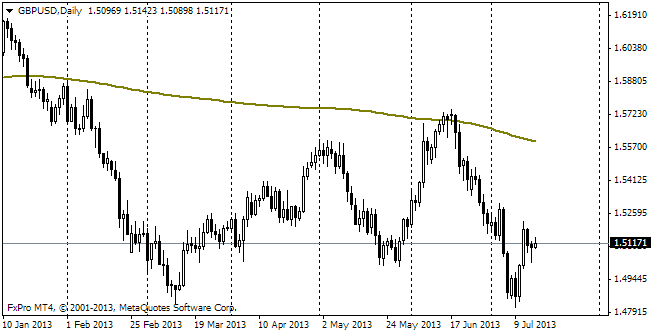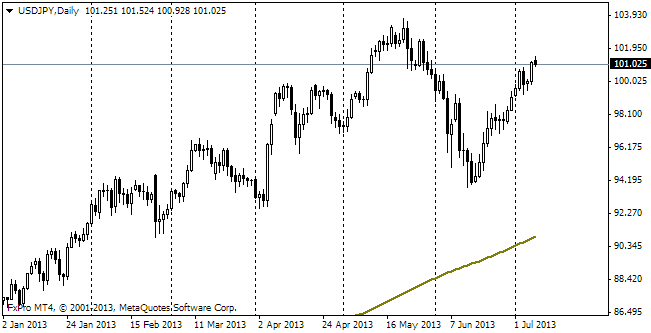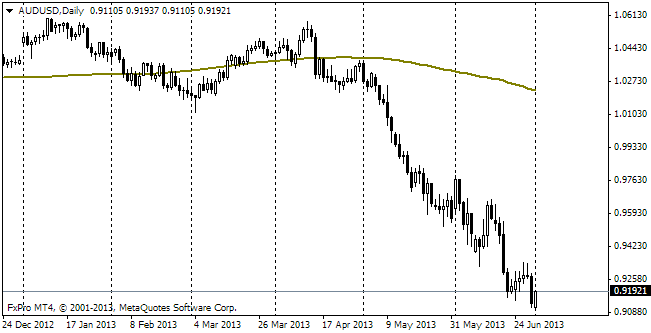EUR/usd
Spurred by the increased demand for US assets, eurusd fell down to a fresh three-month low at 1.3587. Investors' outflow from the sterling looked really remarkable – it was going on simultaneously and was even more conspicuous. And all this happened without any clear signals of weakness in the eurozone as well as in Britain. This state of affairs sends us to seeking reasons outside Europe. The price of US stocks, in the meantime, is rallying and remains in the overheated zone. There is a feeling that EU currencies are losing investors right to ensure stock purchasing in the USA and the developing countries. But in reality investors are simply rebalancing their portfolios to make an investment into the assets with higher yield. The currency, whose CB is expected to start lending stimulation and expand money supply in the financial system of the region in a week, can hardly be referred to such assets. From yesterday's comments of Yves Mersch we've concluded that the ECB does not intend to narrow the channel of the major interest rates. And it means that should the major refinancing rate decrease, the deposit rate will enter the negative zone, punishing the banks for ‘parking' cash in the ECB instead of issuing loans to households and companies, which is so much needed now (see our previous review). Besides, you shouldn't think that on the agenda there is only traditional leverage through interest rates. It can also be a new round of LTRO. With such data at hand, we expect a half-hearted step regarding the rates, i.e. their reduction by 12 bps instead of the standard 25, but together with the announcement of the lending programme for the EU banks at new low rates. In effect, this measure shouldn't have any catastrophic consequences for the euro and change the landscape of the financial market. However, by contrast with the coming increase in the US and British rates, the policy easing should further put downward pressure on the euro, pushing the pair below 1.30 within a couple of months.
GBP/USD
Investors were withdrawing their money from the cable all through the day yesterday. Below 1.6750 the process already looked self-supporting as triggering of limit orders provoked further selling in the pair, carrying it down. As a result, in the absence of any bad news on Britain, the pound was being sold across the board, depreciating even against the euro. Over the day the pair fell from 1.6815 to 1.6696. For the last couple of days the losses have made a bit less than two figures and since the beginning of the month – about three ones. Even in case of a break we shouldn't hope for the complete recovery to 1.70.

USD/JPY
The processes, which affected the euro, didn't have any impact on the Japanese currency. The dollar demand failed to lead USD/JPY to new, even local, highs. On the attempt to catch at 102 in the afternoon the pair suffered a serious attack, which brought it to 101.60. Today trading is held at yesterday's lows. Most likely, the yen is not ready to stop trading sideways in the near future. At least it isn't in a hurry to do it without any clear signal from officials or the CB . What will be there when the stock rally dies out?

AUD/USD
The aussie was only partially affected by the increased demand for USD yesterday. Already today the currency has recovered. Partly because the Australian dollar can scarcely be referred to the camp of sufferers. The RBA changed its rhetoric to neutral a few months ago and the economic data speak about the favourable effect of the preceding easing. The pair is trading at 0.9270, staying at a distance from its 200-day MA, which is now at 0.9170.
